Commentary 14 Oct 2013 09:20 am
Give me a good drawing
As animation left thee Thirties proudly moving into the Forties there was a lot to be proud of. In a short period, the animators had moved from stick figures to rubber hoses to fully rounded individuals acting through their pieces. The animation had gotten a bit sentimental (as were many live action pictures of the day), but they handled their tasks well.
The acting had grown full throated and offered more than just the surface performances.
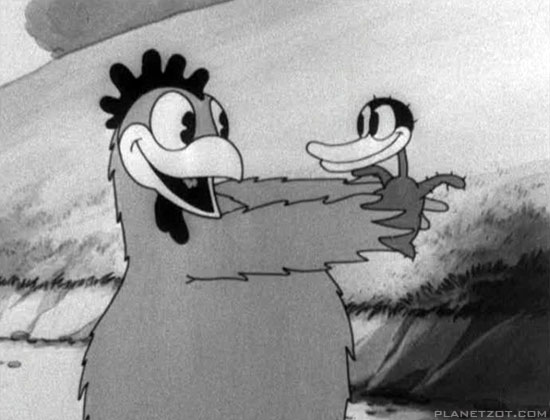
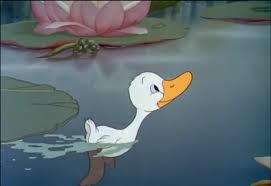
The early version of Disney’s Ugly Duckling and the Later one.
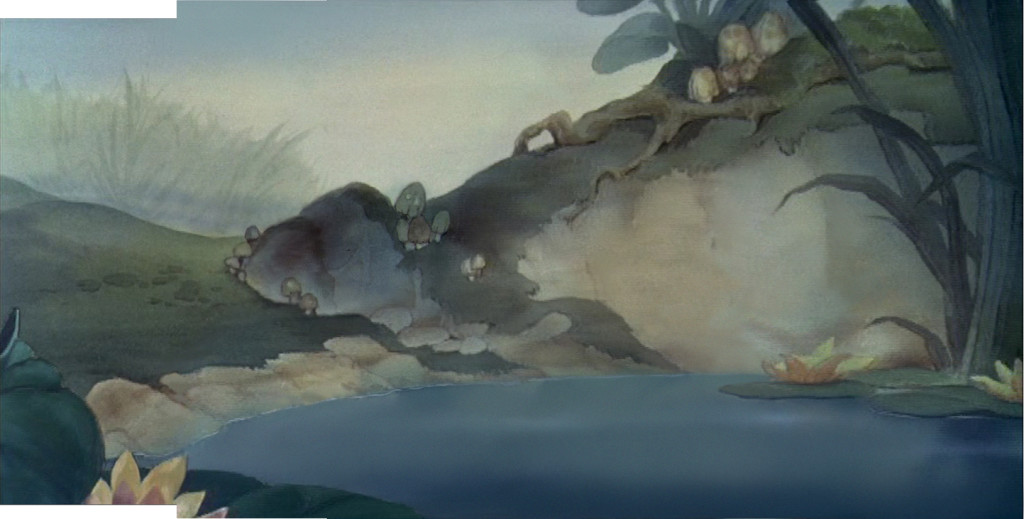
Hans Bacher’s beautiful reconstruction of the BG from the latter film.
Looking at a film like The Old Mill we see rich scenics animated, a film that played against The characterizations of the The Ugly Duckling or Ferdinand the Bull. Warner Bros were starting to slip into their Looney Tunes period as their characters grew smart and zany. This movement was led by Bob Clampett with Tex Avery showing him how to deal out wild paced timing and surrealiztic movement to play for any joke they could get. Disney was straight as an arrow but went for the beauty thing and achieved it as peers competed with each other in the varied studios.
Even Terrytoons were stealing Hollywoods gaga and pulling them off in a somewhat retro manner.
After the Disney strike and the entrance into WWII design and stylization started to grow up. They saw what the Russians had been doing in their attempts to animated the state-run propaganda, ad the art left some inspired, though it was obvious that the animation was living up to their designs.
Some of the animators on the sidelines pushed themselves into the forefront of graphic evolution in animation. Leading the pack in America were the free lanced group working for UPA and the military. The use of strong graphics allowed the aniamtors to get awa with a bit less animation while keeping the films strong. People like Hilberman and Zach Schwartz may have been on the wrong side of Disney’s politics, but they pulled out the stops with their pen and inks.
Films like Hell Bent for Election or A Few Quick Facts About Fear gave the artists the right to move daringl forward with their very strong artwork.
These led Chuck Jones to follow his designers like John McGrew to change the face of the animation. With The Dover Boys of Piemento University all of animation took notice and immediately tried to replicate the work going more and more daring with each film.
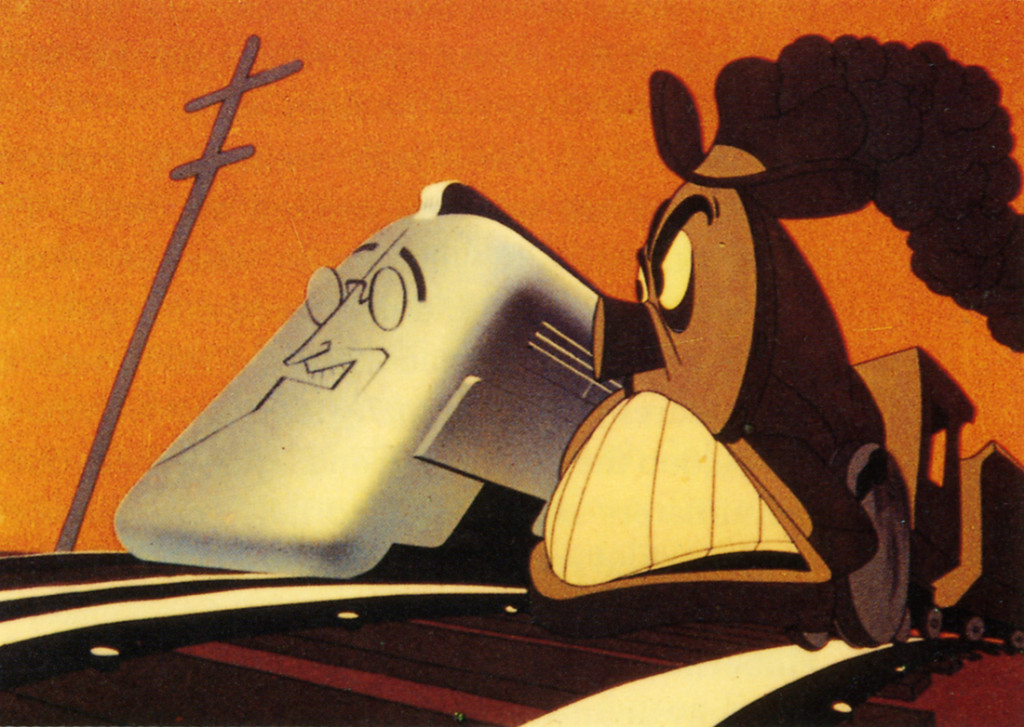
Hell Bent for Election
Immediately after the War, these new graphics returned with the troops as Disney made strong colored works dominated by the likes of Mary Blair and the story structure of Bill Peet. Warner Bros., mostly under the guidance of Chuck Jones brought their abstract art to the BGs with similarly strong painters like Paul Julian leading the way. Under John Hubley at UPA he had not only designed and painted films but also co directed the Oscar nominee The Tell Tale Heart.
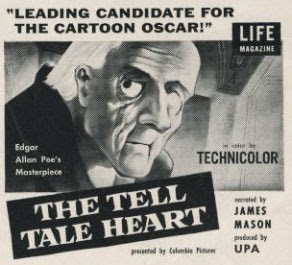
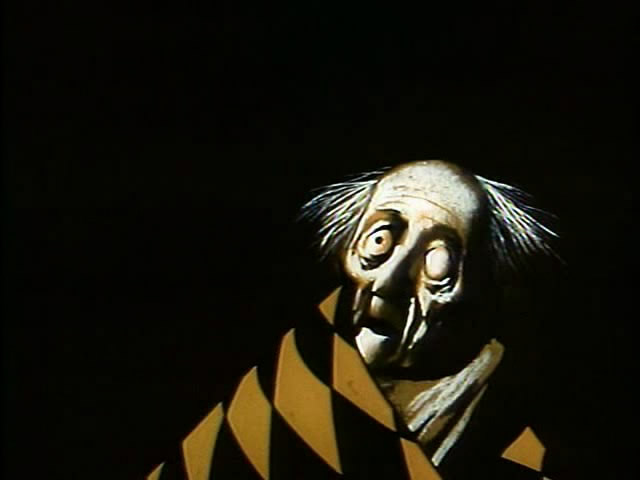
Poster and art for The Tell Tale Heart by Paul Julian at UPA.
Animation went such a distance in a short period of time. From the ball of uncontrolled mass called Oswald the Rabbit, to a rubber hose Mickey & Minnie Mouse to well defined circular characters. It led to more and more sophistication in the scripts and stories with the graphics trying to keep up.
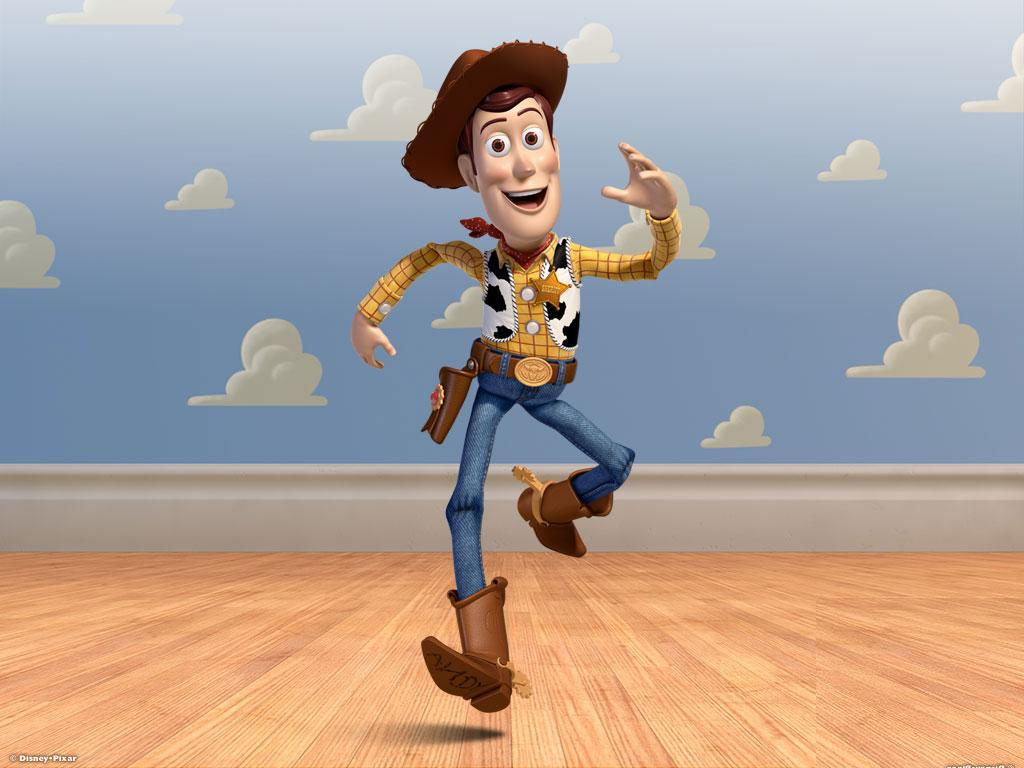 This all ended in 1995 as Toy Story burst onto the screen. The cgi graphics took time to grow up to the sophistication we have today with the likes of Brave or Despicable Me. Seeing the incomparable work in the 2012 Oscar winner, the even more precocious The Life of Pi, gives us pause for thought. We have no idea where animation is going, but for the moment it is definitely not graphically forward. It is difficult to sit by and watch when I have only my meager tools to work with – a pad and pencil. But I continue forward and hope wheat I do will be accepted.
This all ended in 1995 as Toy Story burst onto the screen. The cgi graphics took time to grow up to the sophistication we have today with the likes of Brave or Despicable Me. Seeing the incomparable work in the 2012 Oscar winner, the even more precocious The Life of Pi, gives us pause for thought. We have no idea where animation is going, but for the moment it is definitely not graphically forward. It is difficult to sit by and watch when I have only my meager tools to work with – a pad and pencil. But I continue forward and hope wheat I do will be accepted.
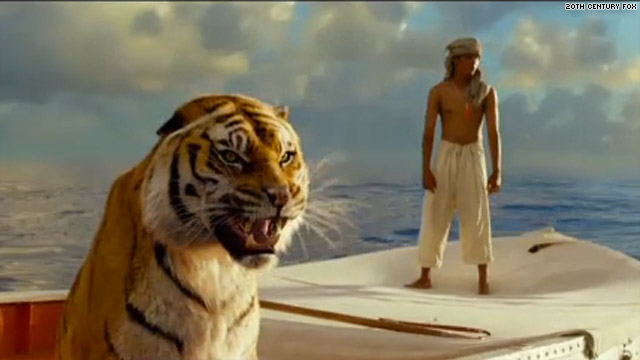
Give me a good drawing. That’s all I ask.
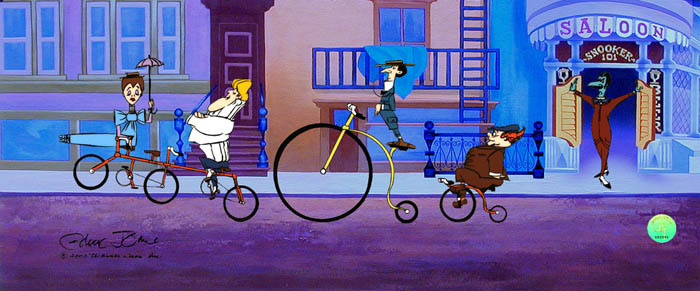

on 14 Oct 2013 at 2:44 pm 1.the Gee said …
sort of a Hypothetical question:
could that shift in building skills not have occurred?
Say, Walt Disney settled for whatever the studio’s best (most profitable) output was or if competition between studios diverged differently, earlier.
Another possible example, given how TV animation developed:
What if for theatrical animation, one of the leading studios struck upon a way to do more limited animation and that became accepted. Those Fleischer bouncing ball cartoons were kind of cheaty that way. Granted, for those cartoons, the notion was for there to be interactivity between the audience and the film. But, if some of the other cost-cutting innovations that worked for TV showed up in early shorts and worked with the audience, that would have wrecked the whole dang artform for most people, wouldn’t it?
Yeah. I know even the pose-to-pose of the Dover Boys is stylized character and BG designs–it’s all easy on the eyes. But, that brings up if UPA or Zagreb could have worked earlier and with a broader audience….or would zany humor prohibit that development of earlier, stylized animation/design?
(also, i ask because i’m testing to see if the comments are working. you’ve been posting interesting stuff lately…)
on 14 Oct 2013 at 2:49 pm 2.Stephen Macquignon said …
I would be more than happy too
on 15 Oct 2013 at 5:17 am 3.Mark Sonntag said …
I would go so far as to say that it is the technology which has moved forward, in all areas of life but in many respects society has digressed and not really advanced with the technology.
Personally I tire of the CG versus Traditional argument I’ve read on other sites. Watching Jungle Book the other afternoon I found there was more artistry in that than many of the modern CG films.
Now before anyone jumps down my throat let me make it clear, I work in CG and came from traditional. My comment is aimed at those who claim that traditional animation is primitive . . . really? If that were the case why is it that live plays on Broadway and elsewhere still make waves? One hundred years ago it was thought movies were the death of the stage.
What I mean is this, drawing is a discipline which takes years to learn, as does acting, to be able to do both and then be masterful at it is true art.
In CG, while there are many hands at work to create the beautiful models and sets, the animation itself has boiled down to a single discipline which while related to traditional has more in common with puppetry.
I love both art forms, yes, I think of them as separate although related. I think neither is more important than the other and both have their place, unfortunately it is executives who have us believe that CG is the only way.
I beg to differ . . . don’t we all.
on 15 Oct 2013 at 9:50 pm 4.Shane (Fighting Seraph) said …
To Mark: Your comments are the kind poignancy that is sorely lacking in this decade. It also makes me more appreciative of Golden age Hand-Drawn animation, Stop-Motion/Clay, Early Internet Pioneers (1999-2003), old Japanese animation, and Old video games. (The same goes for this post.)
on 19 Apr 2014 at 6:30 am 5.bavaria said …
Every weekend i used to pay a visit this website,
for the reason that i wish for enjoyment, for the reason that this this site conations really good funny data too.
on 26 Apr 2016 at 2:39 pm 6.Juan Manuel Rodriguez said …
Is wonderfull this website,the things you write here,are full of history of animation.
I love drawing,and i think of the old 2d animation is wonderfull ,nothing compares to CGI because is predictible ,the hand draw animation is another world itself.
Every person who draws a character puts part of his point of view of his draw.
This blog is very interesant and illustrative.